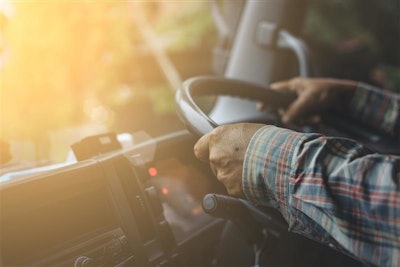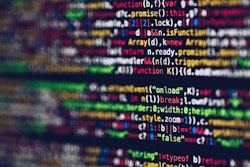
Nearly every industry battered by the pandemic dragging along the manufacturing, warehousing and logistics sectors are already looking ahead to 2021, cautiously optimistic that a rebound is on the horizon from the downtime caused by the Coronavirus disease (COVID-19). It now appears vaccines will be globally distributed relatively quickly. However, social distancing and contact tracing remains an issue to contend with, and businesses are concerned about responding to the next pandemic.
While working to ensure a business rebound in the longer term, industry leaders are also grappling with some immediate burning questions. The first is how to ensure factories and warehouses comply with social distancing and sanitary requirements. The second is, regardless of the solution, how can a business leverage the technology that keeps workers safe while contributing directly to the bottom line. Many businesses address solutions and ROIs with a siloed effect. Each solution discretely matches the business problem 1:1.
Addressing those two concerns doesn’t have to be mutually exclusive. Real-time locating systems (RTLS) offer a way to bridge that gap, with savings and efficiencies in the longer term coupled with immediate solutions like worker safety in the pandemic era.
RTLS to address the here and now
Many businesses are turning to RTLS to address what is the biggest concern amidst the COVID-19 pandemic, keeping people safe and healthy. RTLS technology is one of the most secure and accurate solutions on the market to measure the distance between two people or objects. By using RTLS, a business can more practically deliver a solution that can help ensure worker safety vs. other technologies.
For example, warehouse employees can wear small, unobtrusive tags on their lanyards, on their wrists or attached to their helmets. These tags may accompany existing security/access badges. The badges or tags are tracked by monitors that measure the distance between workers and the system can send out a vibration or an audible alert if individuals get too close. These systems offer accuracy down to 10 centimeters and can send out an alert in less than a second.
Social distance monitoring with haptic notification is an effective pre-emptive measure. Additionally, employers need to provide contact tracing to trace exposure to infected employees. Such systems can provide the necessary historical documentation, the data generated by the tags can easily be used to provide an audit trail and save a few headaches down the line. A variety of solutions are available in the market however, the accuracy and solutions vary. This solution should provide accuracy in its measurements, trace contacts and document physical positions with a minimal amount of error.
But, the benefits go well beyond just helping to comply with social distancing and contact tracing requirements. The use of accurate and reliable RTLS technology can also provide additional benefits to the operations as well.
Once put into place, RTLS solutions can have a positive domino effect on a business’s operations and its supply chain.
RTLS is not RFID
Ok, so you may be thinking, “Isn’t this the same thing as RFID?” Radio frequency identification (RFID) has been around for a long time and is often confused with RTLS. While both systems involve radio frequency-based technology, RFID uses a radio frequency to identify a tag. Yet, it’s similar to barcode scanning except you’re using RF packets to identify an object vs. a barcode. Either way, the solution is designed to provide an efficient identification of an object label. The process occurs at the physical point of information receipt, thus associating location is dependent on where the reader is mounted.
In contrast, RTLS can cover large areas more efficiently, and provide accurate positioning data of dynamically moving objects. The tags communicate their information frequently to the receiving nodes that allow the RTLS systems to process the information in the form of an accurate position.
Do more with location
With the most recent advancements in Bluetooth location technologies, the introduction of the direction-finding methodologies and vendor-specific implementations of advanced positioning engine algorithms, real-time accuracy down to 10 centimeters is now possible. This precision allows tracking of dynamic items that move quickly. RTLS is now delivering on the promise of accuracy and reliability, where previous systems were only capable of proximity detection. Industrial supply chains are adopting this technology at an increasing rate. A quick Internet search shows that the growth rate of RTLS is 20-30% CAGR over the next few years. This growth is a function of innovation, tags with lower power consumption and the improved accuracy described above.
Even as social distancing and contact tracing applications may be less important in the future, they remain a lingering requirement for operational preparedness that is solved by the same infrastructure providing other business solutions and delivering immediate ROIs. Regardless of how you start, once you have the ability to track location, the creative possibilities are endless.













![Pros To Know 2026 [color]](https://img.sdcexec.com/mindful/acbm/workspaces/default/uploads/2025/08/prostoknow-2026-color.mduFvhpgMk.png?ar=16%3A9&auto=format%2Ccompress&bg=fff&fill-color=fff&fit=fill&h=135&q=70&w=240)






